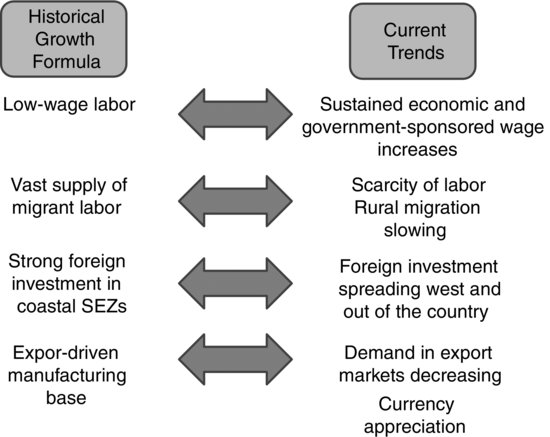CHAPTER 2
Economic Transition
When people say, as they often do, that “China is changing fast,” they typically are referring to the country's astonishing speed of development. They point to the skyscraper-a-day building pace, cities rapidly emerging from fields, and highways seemingly appearing out of nowhere. To be sure, there are no signs that these things are going away anytime soon.
Since the mid-1980s, when economic reform started, and to a much greater extent starting in the mid-1990s, the basic formula and system for economic growth has remained the same. Low-cost labor, rural migration, a focus on export markets, and an influx of foreign investment were the key ingredients of the economic growth explosion. The system is now changing as societal trends challenge the historical growth model. Economic and demographic trends are instigating change that will bring the export-driven machine to an end as the country's driving growth engine.
These changes are highlighted in Figure 2.1 and are compared side by side with the ingredients of the China growth miracle of the last two decades.
Figure 2.1 Trends Driving a New Economic Landscape

Rising wage rates, decreasing export demand, and internal demographic changes are all sources of the change to come.
Wage Rates Are Increasing Significantly
China's economic miracle depended heavily on an abundance of cheap labor. In cities like ...
Get China Catalyst: Powering Global Growth by Reaching the Fastest Growing Consumer Market in the World now with the O’Reilly learning platform.
O’Reilly members experience books, live events, courses curated by job role, and more from O’Reilly and nearly 200 top publishers.

